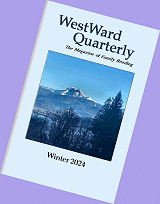The Dramatic Monologue
. . . Will’t please you rise? We’ll meet
The company below, then. I repeat,
The Count your master’s known munificence
Is ample warrant that no just pretence
Of mine for dowry will be disallowed;
Though his fair daughter’s self, as I avowed
At starting, is my object. Nay, we’ll go
Together down, sir. Notice Neptune, though,
Taming a sea-horse, thought a rarity,
Which Claus of Innsbruck cast in bronze for me!
Thus, in the concluding lines of “My Last Duchess,” Robert Browning demonstrates the power of the dramatic monologue in which one speaker relates the entire poem as if to another hearer, or as an internal train of thought. The dramatic monologue is an effective device for characterization. In “My Last Duchess” the pompous Duke, arranging a second marriage after the death of his first Duchess, inadvertently betrays more interest in art treasures and wealth than in the hand of the Count’s daughter.
Though Browning did not invent the form (Tennyson’s “Ulysses” is cited as the first true dramatic monologue), he perfected it. Other nineteenth-century poets who used the form include Wordsworth (“Tintern Abbey”) and Christina Rossetti (“The Convent Threshold”). Twentieth-century authors have used the dramatic monologue within novels as a way on involving the reader in moral judgments; an example is Camus' The Fall. I think of Edgar Lee Masters’ Spoon River Anthology (1915) as a collection of interrelated dramatic monologues by deceased village residents; here are lines spoken by “Lucius Atherton”:
When my moustache curled,
And my hair was black,
And I wore tight trousers
And a diamond stud,
I was an excellent knave of hearts and took many a trick.
But when the gray hairs began to appear —
Lo! a new generation of girls
Laughed at me . . .
Composing a dramatic monologue requires the poet to enter into “the head” of the speaker in order to speak with his voice. I found the form effective in expressing, in a contemporary style, the possible thoughts of several Biblical characters, as in “Philip the Evangelist”:
I tried, but I didn’t always succeed.
I thought that magician guy, Simon, really saw the light
when I explained to him who You were.
He stuck around for a while,
but Peter saw through him —
he was only in it for what he could get out of it.
I had better results with that Ethiopian.
I had to run pretty fast
to keep up with his chariot.
But the man was searching.
He had his Bible open already —
he couldn’t wait to get baptized!
On second thought, I guess I can’t take credit for him . . .
Other biblical monologues of mine appear in Shirley Anne Leonard’s chapbook The Promise, or can be found on my web site, www.rcleonard.com (click the “Verse and Lyrics” link). Shirley Anne, herself, has a dramatic monologue, “U. S. Soldier in Iraq,” that was published in Lucy Cain’s Secure the Fort (and Remain Under God) (2007):
Walking in the steps of Abraham,
And I’m no saint; I’m just a man,
And it sure gets hot in this desert sand.
Have mercy, Lord. . . .
Use the dramatic monologue to bring out the thoughts and feelings — even the secrets — of the characters you want to write about. It makes them come alive in a way straight description does not.
Happy Writing!
The Publisher
©2011 Laudemont Press


